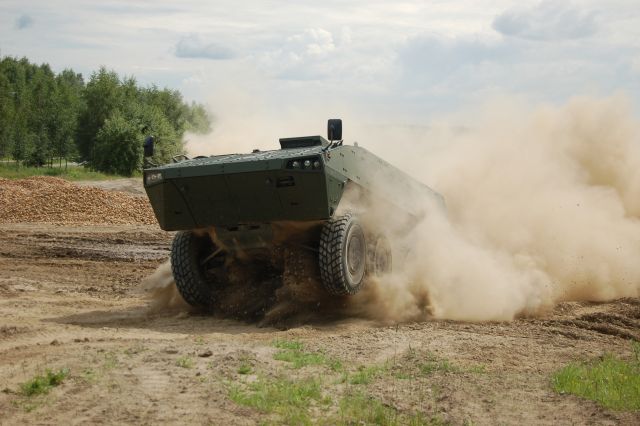Breaking news
Lockheed Martin Ends Collaboration with Patria on Havoc & Will Present its Own Design for ACV.
| 2015
|
|
|||
|
Defence & Security Industry News - Lockheed Martin
|
|||
|
|
|||
|
Lockheed Martin Ends Collaboration with Patria on Havoc & Will Present its Own Design for ACV
|
|||
|
Army Recognition has learned that Lockheed Martin stopped its association with Finnish company Patria on the Havoc 8x8 Armored Modular Vehicle program. The Havoc was Lockheed Martin's entry in the U.S. Marine Corps' Amphibious Combat Vehicle (ACV) Phase I program. Lockheed Martin will instead run its very own vehicle program. The design of this vehicle is expected to be unveiled at Modern Day Marine defense show in September.
|
|||
|
|
|||
 Lockheed's Havoc 8x8 Armored Modular Vehicle performing automotive tests Lockheed's Havoc 8x8 Armored Modular Vehicle performing automotive tests |
|||
|
|
|||
| Contacted by Army Recognition, a Lockheed Martin representative explained: '"Lockheed Martin is fully committed to the United States Marine Corps. Lockheed Martin looks forward to providing an Amphibious Combat Vehicle (ACV) solution with significant growth margin for all future ACV variants. Prior to Lockheed Martin's ACV proposal submission, Lockheed Martin and Patria mutually agreed to end our exclusive association on the program. For competitive reasons, we are not disclosing information on our proposed solution at this time." The spokesperson also said that Lockheed Martin is expecting to unveil its new solution during Modern Day Marine, a defense show held in September in Virginia. The Amphibious Combat Vehicle (ACV) is a program initiated by Marine Corps Systems Command to procure an amphibious assault vehicle for the United States Marine Corps to replace the Assault Amphibious Vehicle. The program replaces the Expeditionary Fighting Vehicle program canceled in 2011. There are four contenders for the ACV program: » BAE Systems/Iveco with the SuperAV. » General Dynamics with the LAV 6.0. » Lockheed Martin with their so far undisclosed project (formerly associated with Patria with the Havoc/AMV). » SAIC/ST Kinetics with the Terrex II. According to the RFI issued last year the United States Marine Corps is looking for a wheeled vehicle to provide protected mobility for 10-13 troops and three crew during ground operations with a range of 300 to 500 miles and shore-to-shore and riverine manoeuvres fo up to 3 nautical miles with a maximum swimming speed of 5 to 8 knots. The vehicle should be able to navigate in coastal waters in 2 feet wave swell and plunging surf of 4 to 6 feet. |
|||


























